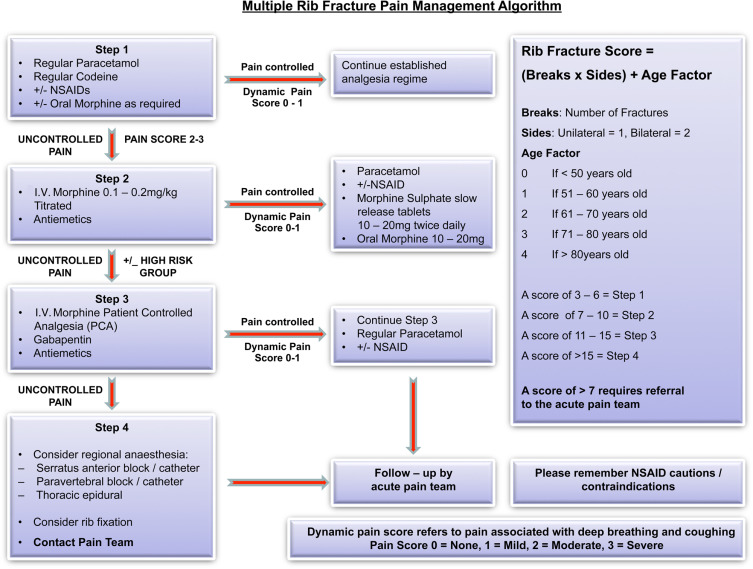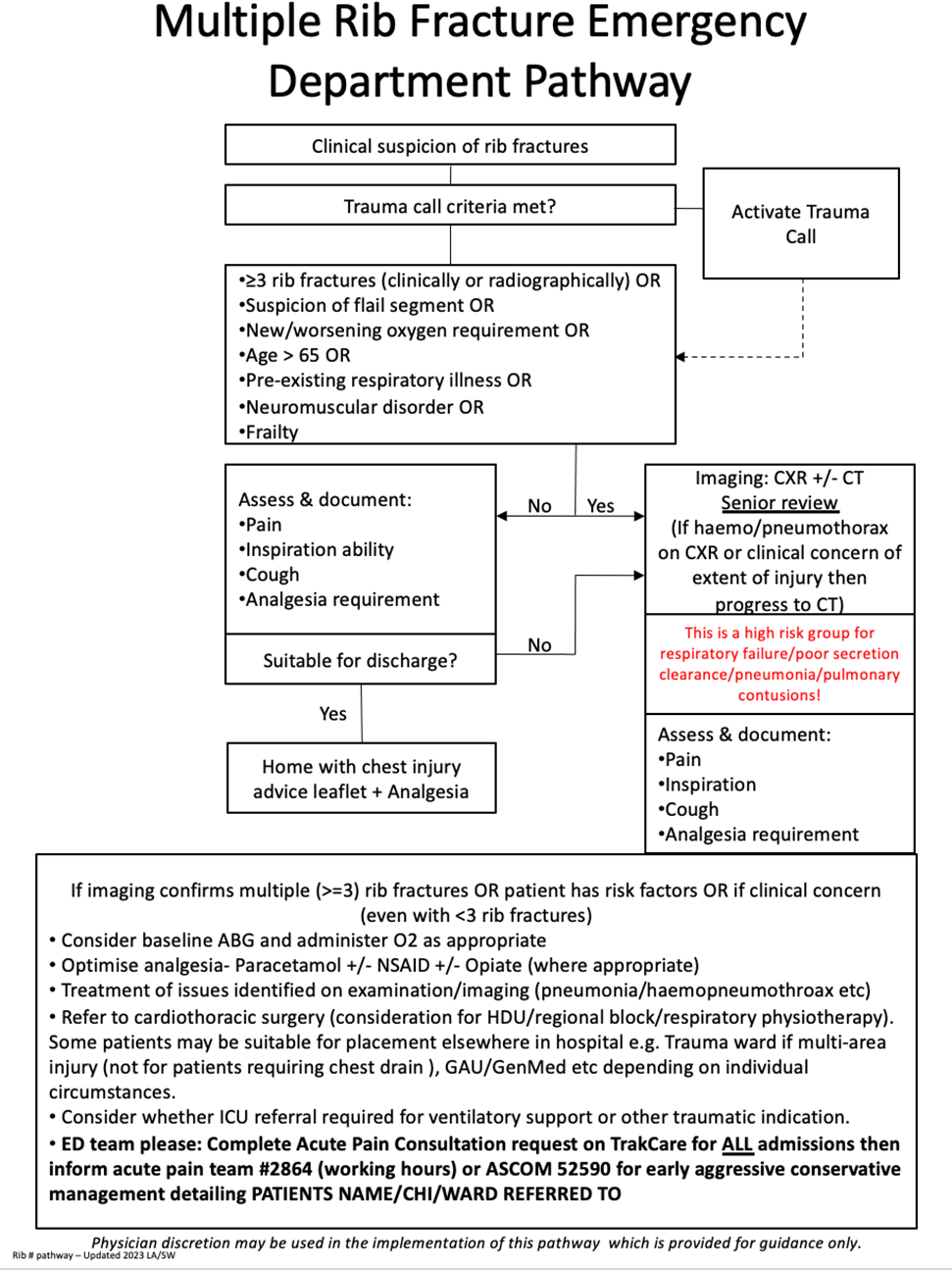| Types | ||
| Grade I | Intimal tear | Conservative management |
| Grade II | Intramural haematoma | Repair / conservative |
| Grade III | Pseudoaneurysm | Repair |
| Grade IV | Rupture | Repair |
Initial mangement
- RSI is the safest and most effective method to secure the airway.
- Induction in the exsanguinating patient can be fatal. Provide ongoing volume resuscitation during RSI in these patients.
- Do not delay induction for arterial or central access in patients in extremis.
- Resuscitate and treat immediately life-threatening injuries before Aortic repair.
- Control Blood Pressure (SBP <120mmHg) with intravenous anti- hypertensive (whilst awaiting repair or under observation).
- CT is diagnostic modality of choice.
Timing
- Repair early (<24hrs) in the following situations:
- Absence of other serious non aortic injuries requiring intervention
- Grade III/IV injuries
- Pseudocoarctation
- Substantial risk of rupture (based upon imaging and clinical findings).
- Delay repair until life and limb threatening injuries have been treated though aim to repair immediately thereafter.
- TEVAR is treatment of choice unless contra-indicated or poor anatomy.
Special Considerations in TEVAR for Trauma
- Use systemic heparin at a lower dose than elective TEVAR in patients with brain injury or solid organ injury at risk of bleeding
- Heparin has and can be safely omitted dependent on risk/benefit
- Prophylactic spinal drainage is not indicated
- Consider a spinal drain only if symptoms of spinal cord ischemia develop.



